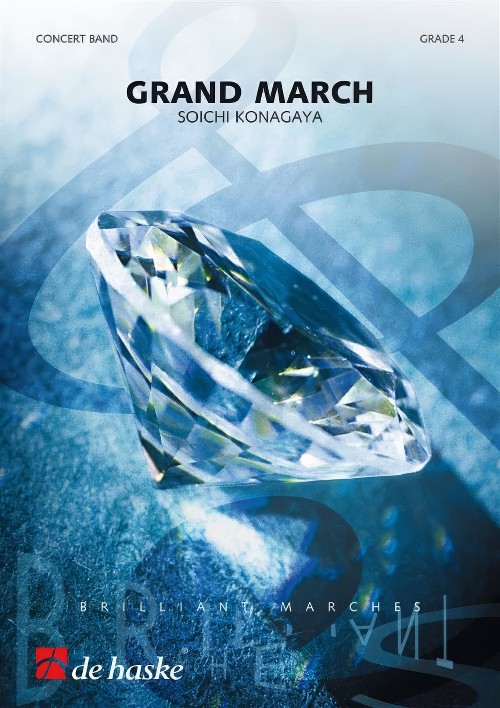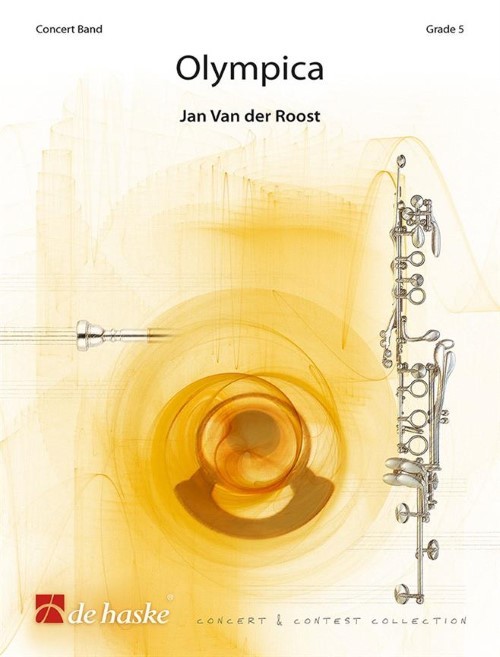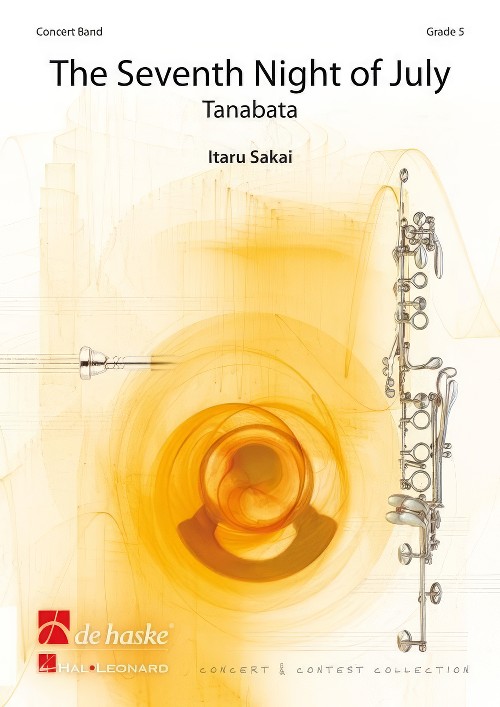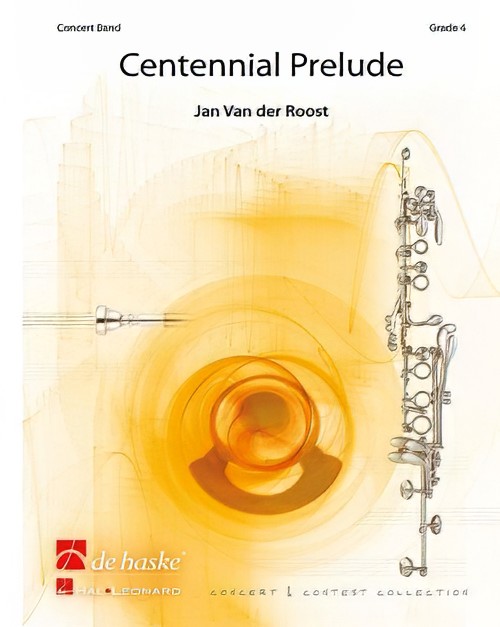Results
-
 £139.99
£139.99Daibutsu to Shika (Concert Band - Score and Parts) - Sakai, Itaru
For 70 years during the 8th century the ancient city of Nara was the capital of Japan. The city is rich in national and cultural treasures, including shrines, Buddhist temples and statues of Buddha. The city is most famous for the Todai Temple with its 16 metre high Buddha dating from the year 752 and the Kasuga Shrine with its tame deer that walk around freely.Duration: 6:45
Estimated dispatch 7-14 working days
-
 £104.99
£104.99Grand March (Concert Band - Score and Parts) - Konagaya, Soichi
Grand March was composed in 1995 for the All Shizuoka Youth Band of Japan. The piece opens with a majestic fanfare. A superb-sounding march, with a commanding character, follows. The talent of this Japanese composer reveals itself in the distinctly lyrical character of the trio section, which contrasts wonderfully with the first lyrical themes of the score.Duration: 5:15
Estimated dispatch 7-14 working days
-
 £134.99
£134.99Jacob's Ladder to a Crescent (Concert Band - Score and Parts) - Mashima, Toshio
Toshio Mashima composed this work for the 40th anniversary of the concert band of the Kwansei-Gakuin University in Japan. The composition is based on the biblical story of the patriarch Jacob, who in a dream sees a ladder reaching into the sky. This story or its symbolism has inspired many artists, the rungs of the ladder representing the virtues through which man climbs during his lifetime.Duration: 6:30
Estimated dispatch 7-14 working days
-
 £169.99
£169.99Olympica (Concert Band - Score and Parts) - Van der Roost, Jan
This "Grand Overture" was commissioned by the "Nagano Community Band" - Japan- on occasion of its jubilee in 1992 and is dedicated to the band's conductor, Ikuo Inagaki. The work is based upon three main themes, each symbolising a certain theme. The first part is characterized by its bright themes played mainly by the brass, accompanied by the woodwinds and festive percussion. This part symbolizes the jubilee which is the origin of the composition. This is followed by a bouncing allegro, in which each register of the band displays brilliant techniques. Especially the woodwinds come to the fore! This movement depicts the industriousness and enthusiasm shown by the members of the "Nagano Community Band" in the carrying out of their hobby. A third, main theme, is choral-like in character and is displayed both in the (soft) brass as well as in the warm medium register of the reeds. Here, nature's beauty in and around the city of Nagano is musically celebrated. Following a "chamber-music episode" (featuring the flute, oboe, clarinet, alto-saxophone and horn) the initial allegro re-occurs, weaving its way towards a grandiose finale, in which the two previous themes are once again apparent. Due to its very colourful scoring and the enormous diversity of musical thoughts and ideas, this composition is a fascinating and memorable piece, worthy a jubilee overture!Duration: 10:15
Estimated dispatch 7-14 working days
-
 £137.99
£137.99The Seventh Night of July (Concert Band - Score and Parts) - Sakai, Itaru
In Japan, July the 7th is a holiday known as Tanabata, for which large celebrations are held throughout the country. The holiday is based on a legend about a young man and a young woman who are separated by the Milky Way and can only see each other once a year on this night. The Seventh Night of July is Itaru Sakai's musical interpretation of this romantic legend. The alto saxophone and euphonium solos during the middle movement represent the two main themes from the legend.Duration: 8:40
Estimated dispatch 7-14 working days
-
 £89.99
£89.99Centennial Prelude (Concert Band - Score and Parts) - Van der Roost, Jan
This short opening music was composed on commission of the symphonic band of Jan Van der Roost's village (= Kontich near Antwerp / Belgium). In 1991, this community band celebrated its 100th anniversary. After composing commissioned pieces from different countries (even from Japan), this was the most 'near' commission he ever received indeed! It is a short but varied piece, featuring all sections of the band. After a short introduction, played by the brass instruments, a crisp rhythm starts and boxes the main theme. After a second theme, played by brass and percussion, a short melodical passage brings some 'rest'. At the end, the fanfare of the introduction reoccurs. Although this "Centennial Prelude" isn't a really demanding piece, it sounds colourful and energetic. It has been recorded on CD by the band of the 'Royal Dutch Airforce' and the 'Desford Colliery Brass band'.Duration: 3:30
Estimated dispatch 7-14 working days
-
 £67.32
£67.32In a Japanese Garden
This is a great opportunity for your ensemble to present a selection highlighting the musical styles of this richly vibrant culture. Written as a result of the composer's visit to Japan, this character piece is constructed in the style of a "promenade"...as if the listener is strolling through a traditional garden filled with sculptured trees and shrubs, fish ponds and beautiful flowers. The subtle melodic and harmonic elements convey a carefree sense of serenity, joy and peace to the listener. This will be a concert favorite for both your students and your audiences.
Estimated dispatch 7-14 working days
-
 £123.75
£123.75Millennium III
Commissioned by and dedicated to the famed Sony Band in Japan, conducted by Toshio Akiyama, Alfred Reed's newest concert piece is a "tour de force" for advanced bands. Quite technical in its demands on all of the players, it's both exciting and remarkable in its musical content.
Estimated dispatch 7-14 working days
-
 £64.35
£64.35Mr. Music
A scintillating concert march for band by Alfred Reed, written as a tribute to Toshio Akiyama of Japan, a world-wide representative of school band music, especially in Asia. VERY NICE
Estimated dispatch 7-14 working days
-
 £158.40
£158.40Overtura (Concert Band - Score and Parts)
A brilliant and powerful new overture by the master of the modern concert band. The splendor and jubilance of Spring are most evident in this new work commissioned by the prestigious Tenri High School Band of Japan. A contest/festival "must" for better high school and college bands.
Estimated dispatch 7-14 working days
